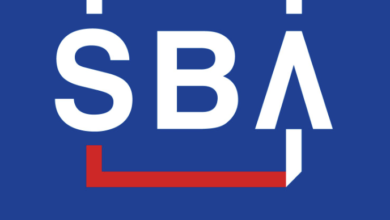What Is A Conventional Loan? And Is It Best For You?

Introduction
If you’re in the market for a new home, you’ve probably heard about conventional loans—but do you know what they are? Conventional loans are one of the most popular mortgage financing options available. But should you choose this type of loan for your home purchase? In this article, we will explore what a conventional loan is, how it works, and whether or not it is the best option for your needs. Read on to learn more and make an informed decision when it comes time to finance your dream home.
What is a conventional loan?
A conventional loan is a type of mortgage loan that isn’t backed by a government agency. Conventional loans are often either conforming or non-conforming. Conforming conventional loans follow lending guidelines set by Fannie Mae and Freddie Mac, while non-conforming loans don’t.
How do conventional loans work?
A conventional loan is a type of mortgage loan that is not backed by a government agency. Conventional loans are available through private lenders, and they typically have terms that are more favorable to borrowers than government-backed loans.
Conventional loans are typically used to finance primary residences, investment properties, and second homes. Borrowers can choose from a variety of loan terms, including fixed-rate and adjustable-rate mortgages.
down payment requirements for conventional loans are typically higher than for government-backed loans, but the interest rates are usually lower. Private mortgage insurance (PMI) is required for most conventional loans with less than 20% down payment.
If you’re considering a conventional loan, be sure to compare it with other loan options to find the best fit for your financial needs.
Advantages and disadvantages of conventional loans
There are many advantages and disadvantages of conventional loans, so borrowers should weigh their options carefully before applying for one. Some of the main advantages of a conventional loan include:
– Lower interest rates: Conventional loans typically come with lower interest rates than other loan types, making them more affordable over time.
– Larger loan amounts: Because they are not backed by the government, conventional loans can be issued for larger loan amounts than other types of loans. This can be beneficial for borrowers who need a large amount of money to finance their home purchase.
– More flexible repayment terms: Conventional loans offer more flexibility when it comes to repayment terms, which can be beneficial for borrowers who need some extra time to repay their loan.
However, there are also some disadvantages to consider before applying for a conventional loan. These include:
– Higher down payment requirements: Borrowers will typically need to put down a larger down payment when financing a home with a conventional loan than with other types of loans. This can make it difficult for some buyers to qualify for a conventional mortgage.
– Private mortgage insurance (PMI) may be required: Borrowers who put down less than 20% of the purchase price when buying a home with a conventional loan will likely be required to pay private mortgage insurance (PMI). This additional cost can add up over time and make your monthly mortgage payments more expensive.
Who are conventional loans best for?
Conventional loans are usually best for people who have a strong credit history and can afford to make a large down payment on their home. Conventional loans typically have lower interest rates than other types of loans, making them a good choice for people who can afford the monthly payments.
How to get a conventional loan
If you’re looking for a conventional loan, there are a few things you’ll need to know. Here’s a rundown of what you need to do in order to get a conventional loan:
1. Know your credit score: In order to get a conventional loan, you’ll need good credit. Lenders will use your credit score to determine whether or not you’re a good candidate for a loan, so it’s important to know what your score is before you apply. You can check your credit score for free using one of the many online credit monitoring services.
2. Shop around: Once you know your credit score, it’s time to start shopping around for lenders who offer conventional loans. Be sure to compare rates and terms from several different lenders before choosing one.
3. Get pre-approved: Before you start shopping for a home, it’s a good idea to get pre-approved for a loan. This way, you’ll know exactly how much money you have to work with and can avoid getting in over your head financially.
4. Find the right property: Once you’ve been pre-approved for a loan, it’s time to start looking for the right property. Keep in mind that with a conventional loan, you’ll usually be required to put down 20% as a down payment.
5. Apply for the loan: Once you’ve found the perfect property and have been pre-approved for financing, it’s time to apply for
Conclusion
We hope this article has helped you gain a better understanding of conventional loans. And the pros and cons associated with them. Whether it is the best choice for you ultimately depends on your individual financial situation. So make sure to carefully consider all factors before making a decision. If you have any further questions or need guidance when applying for a loan. It’s always best to consult with an experienced professional who can provide personalized advice based on your unique circumstances.
